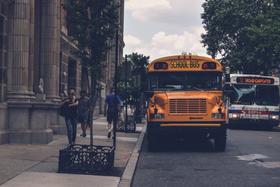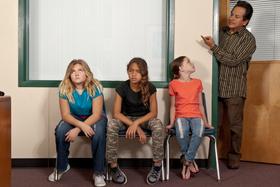Although the media may not frequently report sensational stories of public school gang activity, the reality of the statistics is not reassuring. Experts have found that a rising number of schools have been encountering gang-related activity – in areas outside of the stereotypical urban cities. According to the National Center for Education Statistics, during the 2003 – 2004 school year alone, 41% of high schools and 31% of middle schools reported gang activity.
As Phi Delta Kappa, an association of professional educators, explains, “Once the exclusive of poor neighborhoods in our large cities, youth street gangs have lately inspired an almost paralyzing fear in both suburban and rural middle-class communities across the nation.”
To address the growing gang dangers prevalent in school communities, educational leaders have been enforcing new practices to keep campuses and students safer.
Gangs in Public Schools: The Rising Concern
While gangs can realistically arise in any region, many schools throughout the country have reported significantly higher rates of gang activity. For example, as the Seattle Times reveals, one local Washington state high school, Garfield, has been forced to make significant changes in order to combat pressing gang problems in recent semesters. According to reports, “As Seattle struggles with heightened violence attributed to street gangs, the city's schools are increasingly shaping policies to keep the problem from spreading onto campuses.”
Garfield High School has implemented comprehensive changes in an effort to reduce gang activity, including:
- The school purposefully avoided scheduling any basketball games against their rival school, Rainier Beach, as authorities feared that gang fights would erupt after the game.
- Students attend classes earlier than other nearby schools, preventing them from riding the public bus system at the same time as students from other rival schools.
- A police officer has been assigned to the entry area of the Garfield High School building to prevent gang-related activity.
With these specific changes, as well as additional efforts set into place by school leaders, many are optimistic that the proactive changes will help dissolve the recent rise in gang activity in the city area.
Garfield High School is certainly not the only local school striving to create changes, as Seattle City leaders have designated $8 million towards combating teen and youth violence. Elaborating on the school changes, however, officials are “Quick to stress that most of the city's youth violence does not occur on school grounds and that schools are a haven for many students and an antidote to the problem.”
Public School Responses to Gang Activity
Some public schools are taking aggressively preventative measures to protect their children from gang activity. Reuters News recently reported on Chicago public schools’ initiatives, which focus not only on high school students, but those in elementary and middle school. Experts argue that elementary and middle school students are the most susceptible to gang recruitment. According to reports, younger students are more “vulnerable to being lured into a lifestyle of delinquency, substance abuse, school drop-out, and violence.”
To combat these dangers and fears, many Chicago public schools have implemented “gang free” zones, while requiring that anti-gang resources become more available for schools throughout the community.
The Community Solution to Gang Violence (CSGV) works specifically to eliminate gang affiliations in communities and public schools. In terms of prevention strategies, CSGV recommends that communities and school leaders encourage the following initiatives:
- Encouraging increased student and community involvement in extracurricular activities, such as sports and after school programs
- Stimulating increased family participation (at home and at school)
- Providing greater student support to boost self-esteem and academic achievements
- Training teachers to help become part of the gang-prevention solution
- Providing meaningful activities and lessons for students in schools
- Developing positive peers and role model organizations
- Creating action plans to address students on an individual level if they are suspected to be associated and/or at risk of affiliating with gangs
Today’s public schools are employing more comprehensive policies in combating gang violence. From starting at elementary schools to fostering more family involvement, public school initiatives will hopefully put a dent in the growth of gang activity in America.















